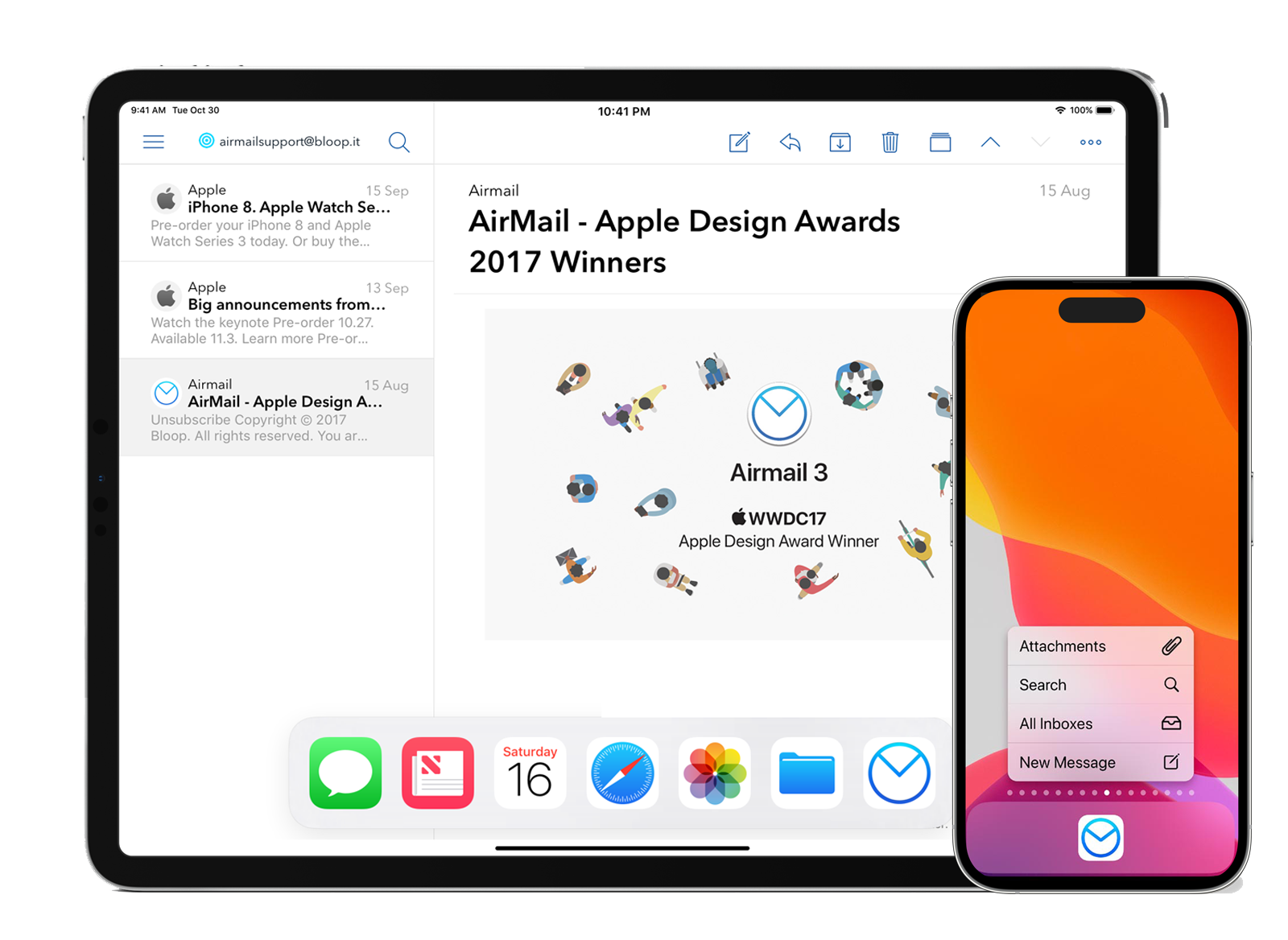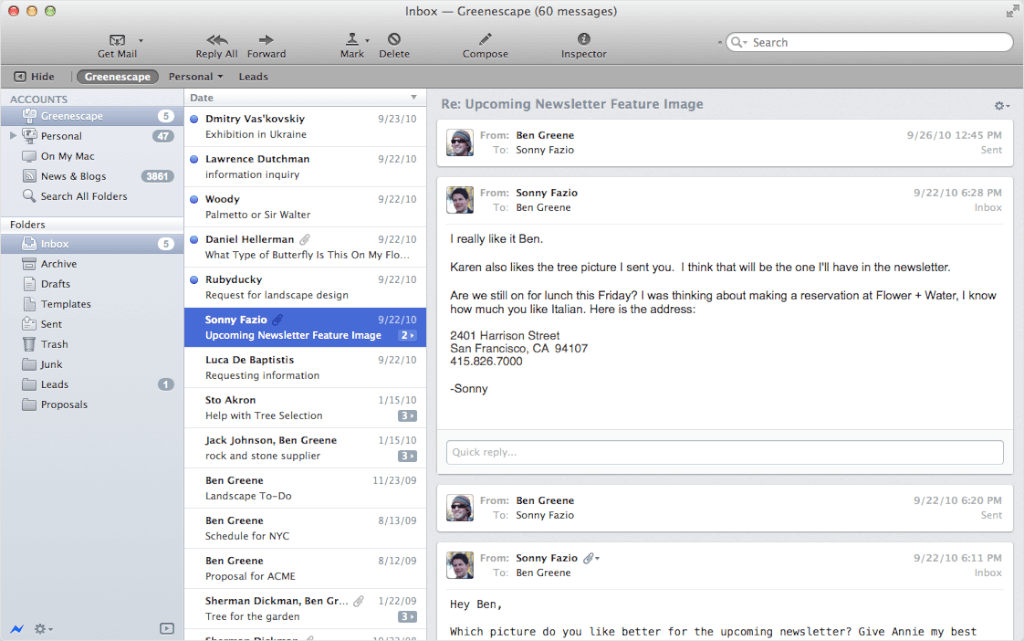Outlook for Mac does not support Apple iCloud calendar (CalDAV) and contact (CardDAV) synchronization. Outlook for Mac does support iCloud Mail. For steps on how to configure your iCloud email account in Outlook for Mac, go to the More Information section of this article.
- Create New Icloud Email Address
- Setup Icloud Email On Apple Mail Client For Mac Free
- Get Icloud Email On Pc
Overview

Apple Mail is the default email client that comes with every Mac using OS X 10.0 or later. This guide will show you how to configure your Apple Mail application to access email for your Media Temple server.
- Use your full iCloud email address as your user name; for example: myname@me.com Enter your iCloud password, which is case-sensitive, in the password field Save your settings and your email.
- To see and use iCloud Email and other iCloud features, set up iCloud on your iOS device or Mac device. When working with iCloud Mail, make sure you use a recommended browser in the Apple Support. ICloud mail on Android is also accessible once you set it up on your Android device. An App for iCloud mail on android is available on Google Play Store.
- The first set of steps in this article shows you how to set up iCloud email aliases. The second and third sets of steps explain how to manage them on iOS devices and Macs, respectively.
This article is primarily for Mail version 10.2 on Sierra (OSX 10.12.32). Your version of Apple Mail may vary depending on the version of Mac OSX you are using.
- Additional steps for older versions of Apple Mail that were released prior to Sierra have been included.
Requirements
Before you start, be sure to have these handy:
- Your domain name: example.com
- Your email address: username@example.com
For more information, please read this article: Creating a POP/IMAP email accountCreating a POP/IMAP email account. - Your email password.
- Your email access domain. The email access domain is completely independent of the web access domain and will look something like this: xxxx-xxxx.accessdomain.com. The 'xxxx-xxxx' string will be a series of randomized letters. This will be totally unique to your specific Grid. Read our article What is an 'Access Domain'? for more information.
READ ME FIRST
This article is provided as a courtesy. Installing, configuring, and troubleshooting third-party applications is outside the scope of support provided by Media Temple. Please take a moment to review the Statement of Support.
Instructions
Let's begin!
1. Open Mail. If you haven't added a new account yet, you'll be taken directly to the Add Account prompt. If you're adding an additional account, or this prompt doesn't otherwise load automatically, you'll need to select Add Account from the Mail menu.
from the Mail menu.Create New Icloud Email Address
3. Enter your email account information and click create.Setup Icloud Email On Apple Mail Client For Mac Free
- Full Name: Your name as you would like it to appear.
- Email Address: Your full email address.
- Password: The password for your email account.
When an autodiscover setting has been unsuccessful, the message 'Unable to verify account name or password' will appear in a new settings box.
5. Fill in the fields using your email info and access domain. If you do not see this box and are using a version of Apple Mail that was released prior to OSX Sierra, skip to 'Additional steps for older versions of apple mail'.
- Email Address: Your full email address.
- User Name: Your full email address.
- Password: The password to your email account.
- Account Type: We strongly recommend connecting via IMAP. To learn more, please see Using Email: How IMAP worksUsing Email: How IMAP works.
- Incoming Mail Server: Your email access domain.
- Outgoing Mail Server: Your email access domain.

Path Prefix: Enter /INBOX here (all capital letters).
Port: You will want to connect using the correct port based on the settings you have selected.
- IMAP: 143, or 993 if SSL is enabled.
- POP: 110, or 995 if SSL is enabled.
Port: You will want to connect using the correct port based on the settings you have selected.
- SMTP: 587, or 465 if SSL is enabled.
- For incoming mail, we recommend using Port 993 with the Use SSL checkbox selected.
- SSL Checkbox: Check this box if you wish to connect using SSL encryption. This feature is supported by default and you do not need to install an SSL for it to work. Note that you will also need to use an SSL port (above) if you select this option.
NOTE:
You may encounter an Unverified SSL Certificate warning if you have chosen to connect with SSL. This is common if you do not have your own SSL Certificate installed. The Grid does not allow you to install your own SSL on email. To avoid seeing this message in the future, add the existing certificate to your trust settings. The encryption in use IS safe, so you can safely select 'Connect' to continue.
- Authentication: Be sure that Password is selected from the dropdown menu.
Get Icloud Email On Pc
- Select your new account from the left hand column.
- Click the 'Advanced' tab and uncheck the box to 'Automatically detect and maintain account settings.'
- Navigate back to the 'Account Information' tab. This time, select Edit SMTP Server List... from the Outgoing Mail Server (SMTP) drop-down menu.
- You will be taken to the SMTP server list. Make sure that you have selected the correct email address. Click the Advanced tab and verify the following settings:
- Be sure the box to 'Automatically detect and maintain account settings' is not checked!
- Enter your desired outgoing mail port. Since many ISPs block port 25 (the default outgoing mail port), we strongly suggest using port 587, or port 465 if SSL is enabled.
- Select 'Password' from the Authentication drop-down menu, and make sure the 'Allow insecure authentication' box IS checked. If you don't see this option, you may need to update Apple Mail or Yosemite to the newest version.
That's it! You just configured your Media Temple email address on Apple Mail. As always, if you have any questions, please feel free contact Media Temple's award winning 24/7 support.
Resources
Mail User Guide
Use the Mail app to send, receive, and manage email for all of your email accounts in one location. Simply add the accounts—such as iCloud, Exchange, Google, school, work, or other—you want to use in Mail.
Add an email account to use in Mail
The first time you open the Mail app on your Mac, it may prompt you to add an account. Select an account type—if you don’t see your type, select Other Mail Account—then enter your account information.
If you already added an email account, you can still add more. In Mail, choose Mail > Add Account, select an account type, then enter your account information. Make sure the Mail checkbox is selected for the account.
If you’re using an account on your Mac with other apps, such as Contacts or Messages, you can also use that account with Mail. In Mail, choose Mail > Accounts to open Internet Accounts preferences, select the account on the left, then select the Mail checkbox on the right.
Temporarily stop using an email account in Mail
In the Mail app on your Mac, choose Mail > Accounts.
Select the account, then deselect the Mail checkbox.
Now the account’s messages are not shown in Mail.
Start using an email account again in Mail
In the Mail app on your Mac, choose Mail > Accounts.
Select the account, then select the Mail checkbox.
The account’s messages are shown again in Mail; they don’t need to be downloaded from the server again.
Remove an email account from Mail
When you remove an email account from Mail, the account’s messages are deleted and no longer available on your Mac. Copies of messages remain on the account’s mail server and are still available (from webmail, for example).
Important: If you’re unsure whether messages you want to keep are still on the mail server, move or copy them to a mailbox stored on your Mac (the mailbox appears in the On My Mac section in the Mail sidebar) before you delete the account in Mail.
In the Mail app on your Mac, choose Mail > Preferences, then click Accounts.
Select an account, then click the Remove button .
Note: If the account is used by other apps on your Mac, you’re asked to remove the account in Internet Accounts System Preferences. Click the button to open Internet Accounts, then deselect the Mail checkbox for the account. To stop using the account in all apps, make sure the account is selected, then click the Remove button .
